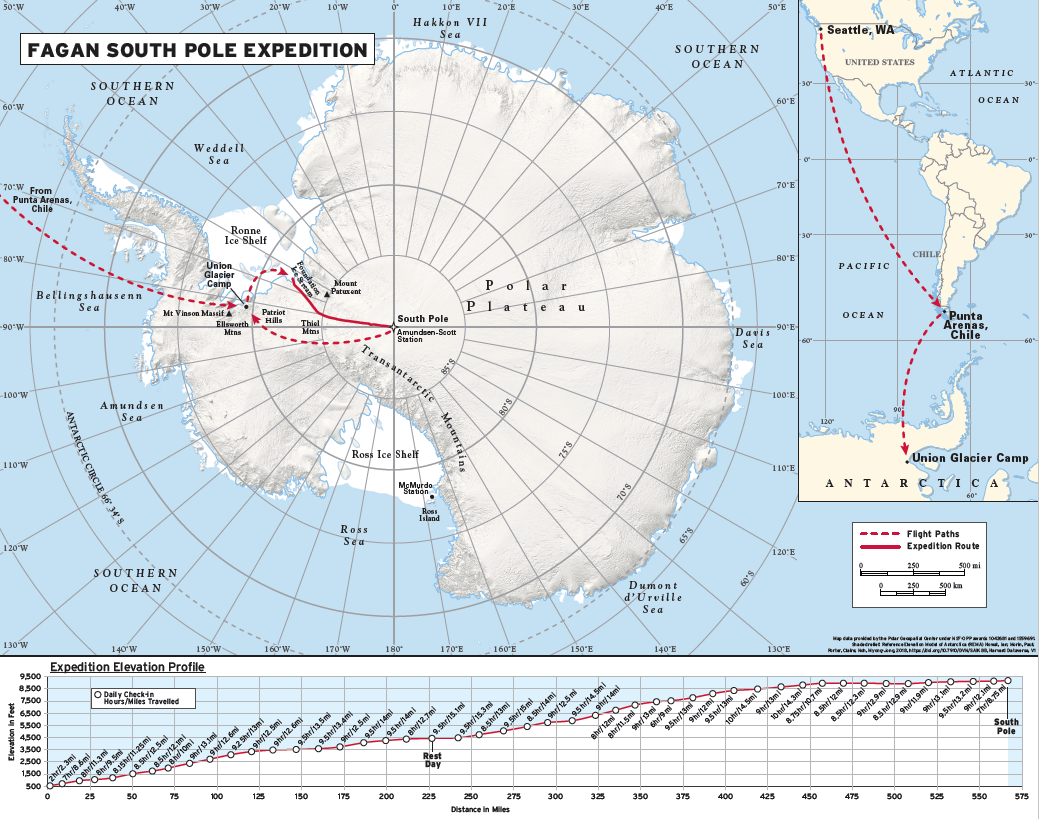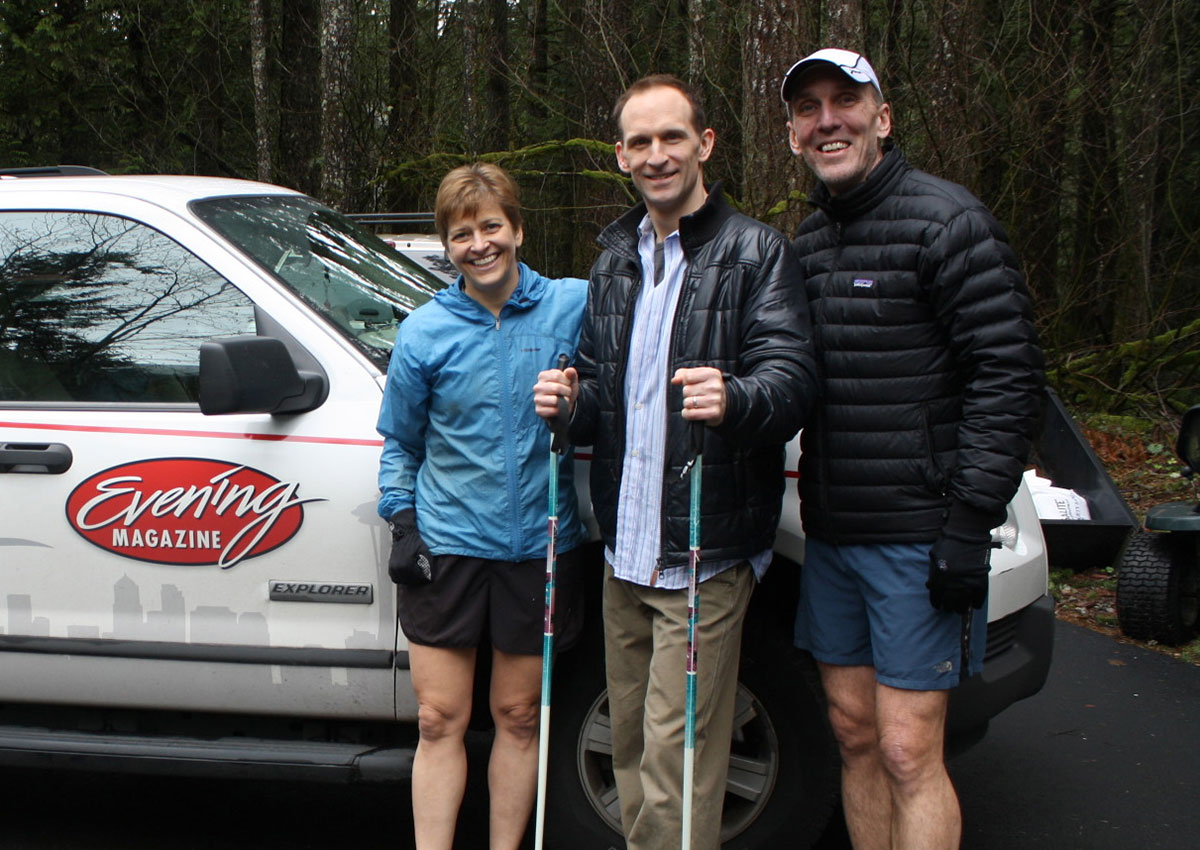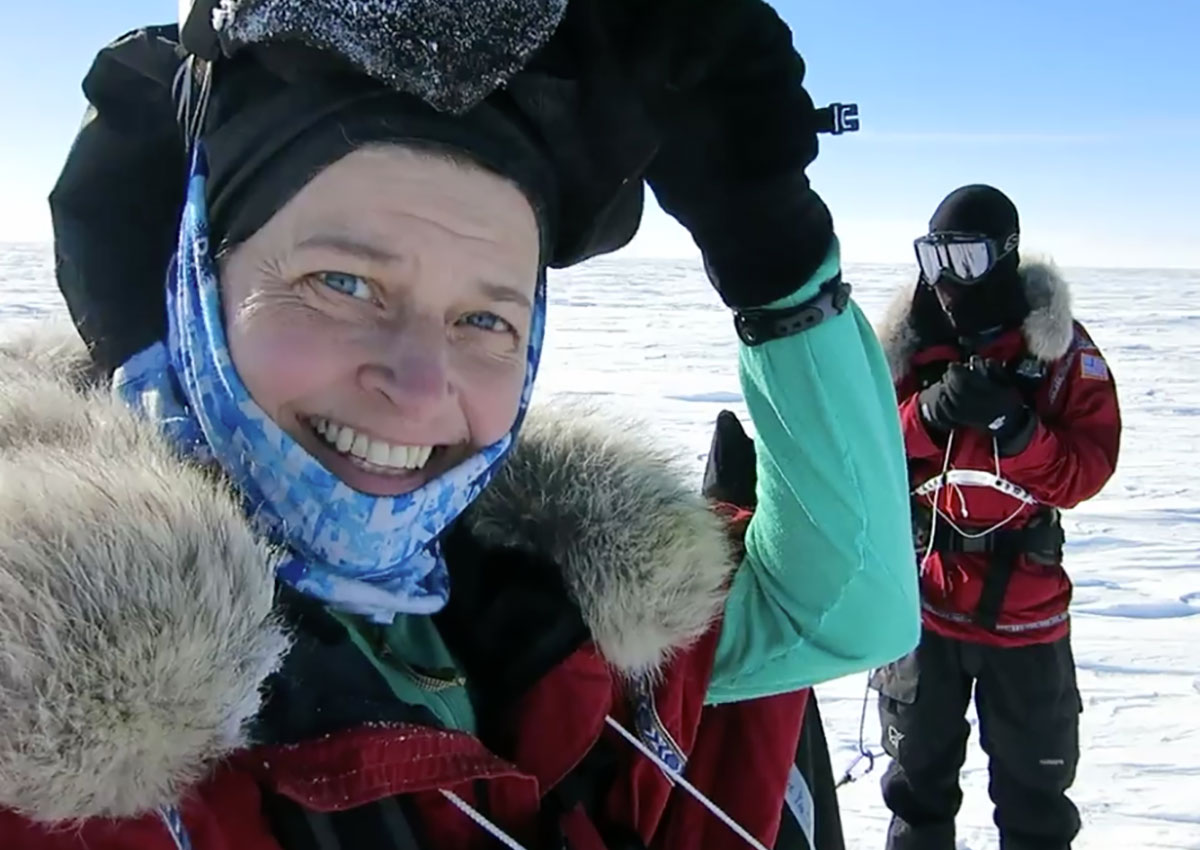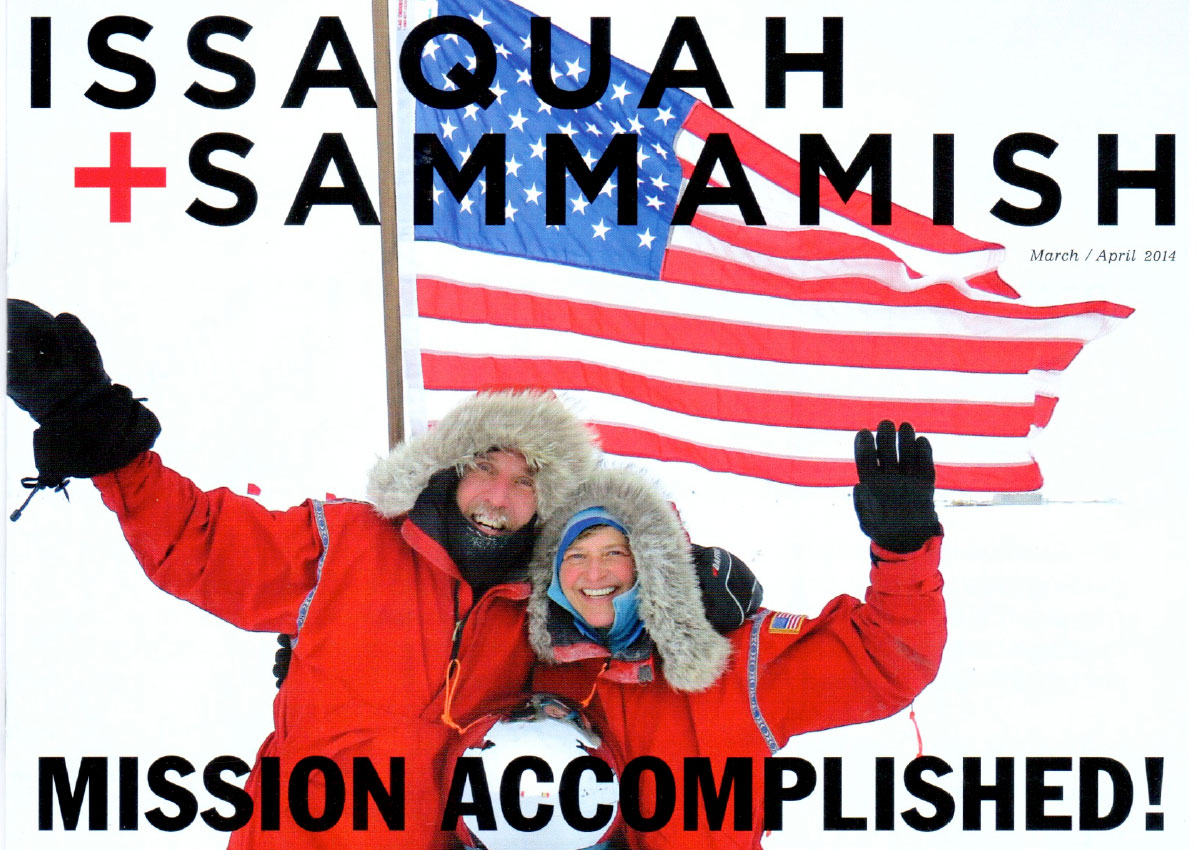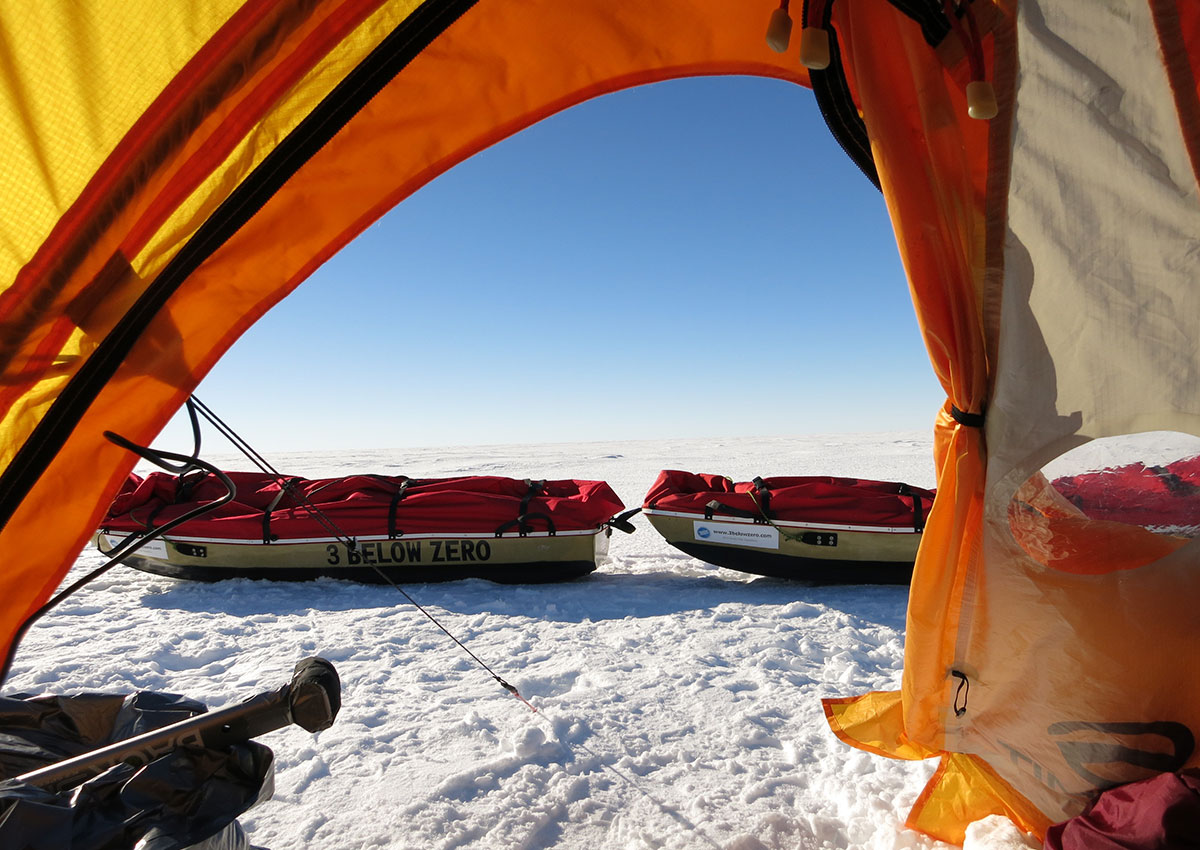South Pole Expedition
A married couple’s history-making quest
In mid-November of 2013, my husband and I were flown on a small plane to the edge of Antarctica near the Ronne-Ice Shelf. We were left on our own to start a 570-mile quest to the South Pole. With no guides or resupply, we each hauled 220-pound sleds for 10 hours a day.
On January 19, 2014, we made history as the first married Americans to ski unguided, unsupported and unassisted to the South Pole.
- Unguided meant we tested our own skills and knowledge without the help of a professional guide in the true spirit of polar journeys.
- Unsupported meant we didn’t take any outside assistance such as an air-resupply of food, fuel, or replacement equipment.
- Unassisted meant were only human powered, with no aid such as wind-powered kites, or motorized vehicles used for speed or load advantage.
Read the complete
account in the book
account in the book

Why journey to the South Pole?
As one of the last frontiers on earth, my husband and I longed to experience Antarctica’s amazing environment while still wild and pristine. A South Pole journey promised extraordinary adventure and enormous challenge.
And we hoped our expedition would inspire others to imagine possibilities that seemed beyond their reach, and to push outside their comfort zones. Especially kids.
Schools in Washington, California, Iowa, Ohio and beyond followed our journey and listened to our daily voice blogs dispatched live from Antarctica.
We’ve shared our story with numerous gymnasiums packed with students eager to learn and engage about our quest. Our message resonates with different audience types (businesses, non-profits, women, parents, and adventurers).
About Antarctica
FAQs
We followed the Messner Route which skirts the western flank of the Foundation Ice Stream and the Transantarctic Mountains in order to avoid massive crevasses, then turned south to the pole.
- Left home on November 17, 2013: Flew from Seattle to Punta Arenas where we made final preparations. Planned for 5 days but stayed for 10 days due to poor weather in Antarctica.
- Arrived in Antarctica on November 28, 2013: Flew from Punta Arenas, Chile to Antarctica. Landed on the ANIice runway at Union Glacier.
- Union Glacier: Spent a couple days getting acclimatized and doing final tests of our gear and systems.
- Expedition Days 1 – 15: Flown by ski aircraft to the edge of the Ronne Ice Shelf (where land meets sea) where our expedition began. When we reached Thiels corner at 84°30’S, we turned south, toward the Pole.
- Days 15 – 48: Skied from Thiels Corner to the South Pole, each day we would pull sleds, camp, eat, sleep. Arrived at the South Pole on January 18, 2014.
- Day 49: Flew on a small plane from the South Pole back to Union Glacier Camp.
- Day 52: Flew to Punta Arenas, Chile.
- Day 55: Arrived back in Seattle on January 25, 2014.
The 3 represented the different members of our team—Marty, me, and our supporters (family, friends, and followers). Just as football’s twelfth man acknowledges fans, we wanted to acknowledge those who helped make our journey possible.
The Below Zero part of the name acknowledges how cold it would be in Antarctica.
In the summer in Antarctica, the sun never sets. Summer lasts from November through January. The average temperature is around 20 below.
During the summer months, up to 200 people inhabit the Amundsen-Scott South Pole Station, a US scientific research station located at the geographic South Pole, the southernmost place on earth, on a high plateau at 90 degrees south, and the finish line of our expedition.
At the time of the 2013-2014 season, approximately 100 people in all of history had traveled to the pole unsupported, unguided and unassisted. We became the 109th and 110th to complete this type of journey, and the first American married couple to do so.
Only about 350 people have reached the South Pole (using various methods including on foot, or with the help of dogs and motorized power). In contrast, over 4000 people have summited Mt. Everest.
Here’s a snapshot of some of the expeditions to the South Pole:
- The first people to reach the South Pole was Norwegian Roald Amundsen and his team on December 14, 1911.
- The Brit Robert Falcon Scott followed on January 17, 1912. Scott and four team members perished on the return trip.
- The next overland journey was not until January 4, 1958 during the Commonwealth Trans-Antarctica Expedition. Snow vehicles were used for this journey.
- On December 30, 1989 Arved Fuchs and Reinhold Messner were the first to traverse Antarctica via the South Pole without motorized assistance or animals. They used only skis and wind assistance to complete the incredible 1,750 mile trip.
- On January 9, 1975 the US opened the Amundsen-Scott station at the South Pole.
- On January 7, 1993 Norwegian Erling Kagge made the first solo and unsupported journey to the South Pole.
- On December 24, 1994 the first woman, Norwegian Liv Arnesen, also made it to the South Pole solo and unsupported.
- Norwegian Borge Ousland achieved the first solo complete unsupported crossing of Antarctica on December 19, 1996.
- On 26 January 2012, Teammates James Castrission and Justin Jones, and Aleksander Gamme (separate expedition) completed the longest unsupported polar expedition by skiing from the edge of Antarctica to the South Pole and back without assistance. In 89 days, they had skied 1414 miles.
- On January 18, 2014, Chris and Marty Fagan became the first American married couple to make a complete expedition to the pole, unassisted and unsupported, having skied the 570 mile Messner Route.
Preparations for Antarctica
What to wear in Antarctica
What will you eat in Antarctica?
How do you cook in Antarctica?
What technology will you use in Antarctica?
What clothing will you wear in Antarctica?
Shipping Gear: The Tent Signing
Tire Drag in Rain
Tire Dragging Training
North Bend Elementary School Kids Cheer

